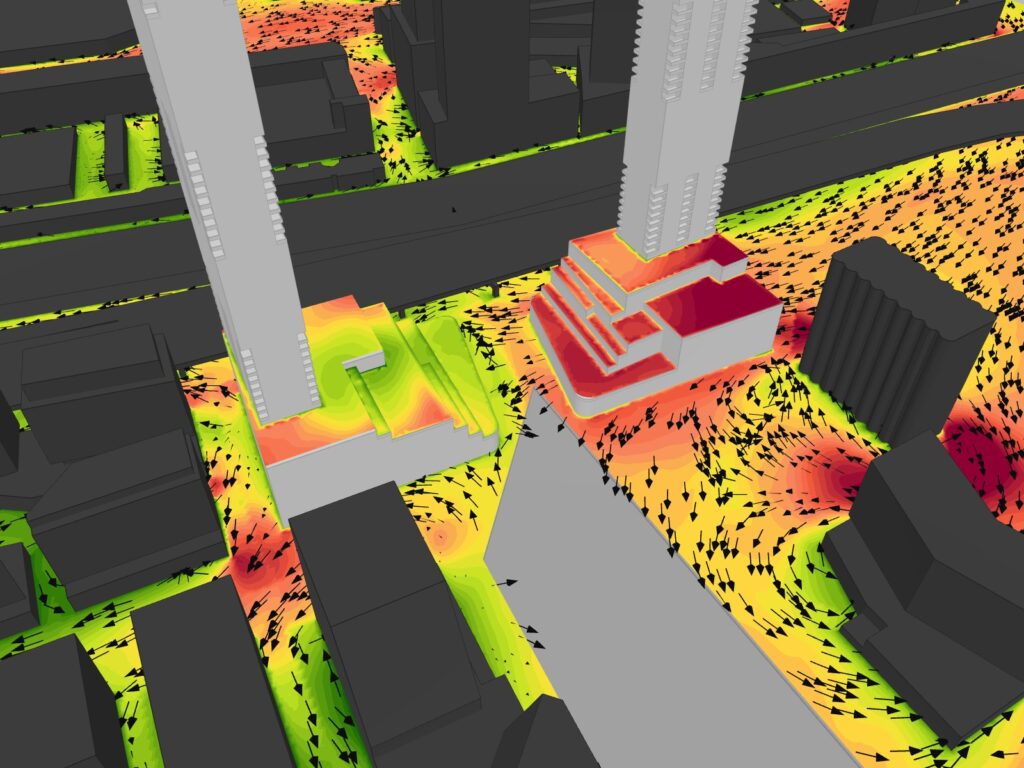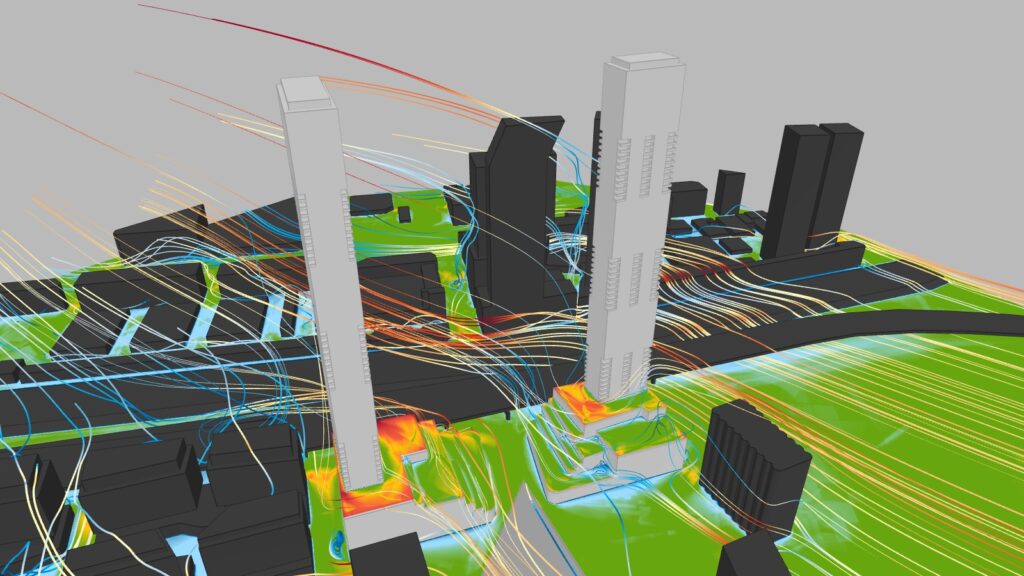Every building has a purpose, from tall residential buildings designed to provide dense housing options in urban environments to commercial buildings that house lively restaurants on one floor and bustling office spaces in the other. What all buildings have in common, however, is the need to be well-designed.
Aesthetics are often a sizeable component of this, but so too is functionality and how the building will impact occupants and the area surrounding it. Wind plays a major factor in structural integrity as well as the aesthetics and functionality of a building design. In fact, mitigating the impact of wind is an important and well-established part of good building design. This is why wind tunnel testing and computational fluid dynamics (CFD) simulations are common.

No design team wants to be told their new building will cause wind safety issues for pedestrians and cyclists. This is especially true one month before a planning application deadline. The costs to overcome a problem like this can quickly mount up! This is why engaging in early-stage wind design, particularly with AI-powered CFD tool for early design guidance, can be helpful.
What is early-stage wind design?
Early-stage wind design is comprised of the wind assessments that occur early in the design process of a building. Wind assessments are crucial for creating buildings that can withstand the highest wind loads. They help to avoid occupant distress and discomfort, and create safe, comfortable surrounding environments for pedestrians. Cladding elements must also be strong enough to remain intact and in place despite the wind pressure exerted on them.
Typically, developers looking to achieve these goals employ sophisticated methods and tools. These include wind tunnel tests and advanced CFD and AI simulations, with the input of an experienced consultant. One such tool is the Industry First AI Simulations by Orbital Stack. This tool is an artificial intelligence-powered wind simulation engine that provides airflow modeling and estimations in a fraction of the time and cost of alternative approaches.
Wind tunnel assessments are complex. The results can be sensitive to relatively small features of the building and the context of the surrounding area. They’re also costly, so they often happen late in the design process, when many design parameters have been fixed. This reduces the uncertainty in the output and ideally limits the need to conduct multiple rounds of assessments. However, when problems are identified and the building design is largely fixed, implementing mitigation measures can be quite costly.
Early-stage wind design is a crucial aspect of changing the game on building design. By accounting for the impacts of wind in the early stages of building design, it is possible to keep costs low enough to work through several design iterations before elements are fixed to resolve potential issues that are likely to occur.
Benefits of Early-Stage Wind Design
Early design insights from wind consultants can provide crucial benefits. Identifying and averting significant wind issues before the design becomes too far advanced are necessary interventions to consider. These problems could be limited or avoided altogether if the major issues can be identified early.
Avoid Project Delays
Project delays are common when a problem arises late in the design process. It often takes additional time to determine what mitigation measures can be put in place once several design elements are fixed. However, conducting assessments early on means more options are available. Such testing helps avoid delays as one strategy can be taken over another to purposely reduce delays. Shifts early on can prevent delays later in the process as well. This is because any major issues, if they arose, have already been identified and a plan developed to reduce their impact.
Reduce Significant Redesign
Early-stage wind design identifies potential issues earlier when these same design elements aren’t fixed, which increases the available mitigation options. This includes simple design changes that may become inaccessible further along in the process. It also promotes the avoidance of large and potentially undesirable wind mitigation measures which can cost thousands in unexpected mitigation.

Save On Material Cost
When it comes to the structural and cladding design, there are large material cost savings to be found. One example is selectively reducing the amount of concrete needed for the structure by making an early and accurate prediction of the likely wind loads. Early assessments and implementation of any necessary mitigation measures also mean more accurate quantities of materials can be purchased. These methods reduce waste or the need to purchase more at potentially higher prices, leading to further return on investment.
Reduce Carbon Footprint of the Building
Early-stage wind design has also been shown to reduce a building’s overall carbon footprint. For instance, leveraging the early analysis to reduce the concrete needed, mentioned previously, can dramatically reduce the building’s emissions, as concrete is a major source of carbon for buildings.
Early assessments open the field on making other low carbon design choices as well. Choices like the type of material chosen for a wind mitigation measure or certain shifts in the overall design.
Address Cost Issues Effectively
An early assessment might identify an important area of concern that can then be addressed in a much more cost-effective way than if it went undetected until late in the process. This is because there are more mitigation options available when fewer or even no design elements are fixed, allowing cost effectiveness to be a more prominent consideration.
Leverage Predictive AI Tools for Early-Stage Wind Design
Early-stage wind design is where data-driven predictive tools come in. By drawing on the results of previous wind tunnel tests and simulations, we have a good understanding of how a design is likely to perform. These are made even more powerful by recent advances in artificial intelligence (AI) and machine learning, which can digest enormous amounts of past data and systematically use to provide new and valuable predictions in a short time.
Orbital Stack’s suite of unique, industry-first AI-based tools developed in collaboration with Neural Concept are delivered through our simulation platform to do exactly this.
These tools can help reduce costs and project timelines, but they do not replace the full, quantifiable assessment methods typically seen later in the design process. They work alongside them instead. In fact, the importance of having experienced consultants in the process is partly to understand the limitations of the tools and interpret their output in a useful and robust way.
Moving Forward
Everyone can benefit from the cost savings and the early identification of critical wind issues provided by AI-based tools. These combined with the superlative precision of the wind tunnel or computational simulations at the appropriate stages in design help to remove nasty surprises. It takes using the right tools for the job at the right time – with the knowledge of experts to back it up.
